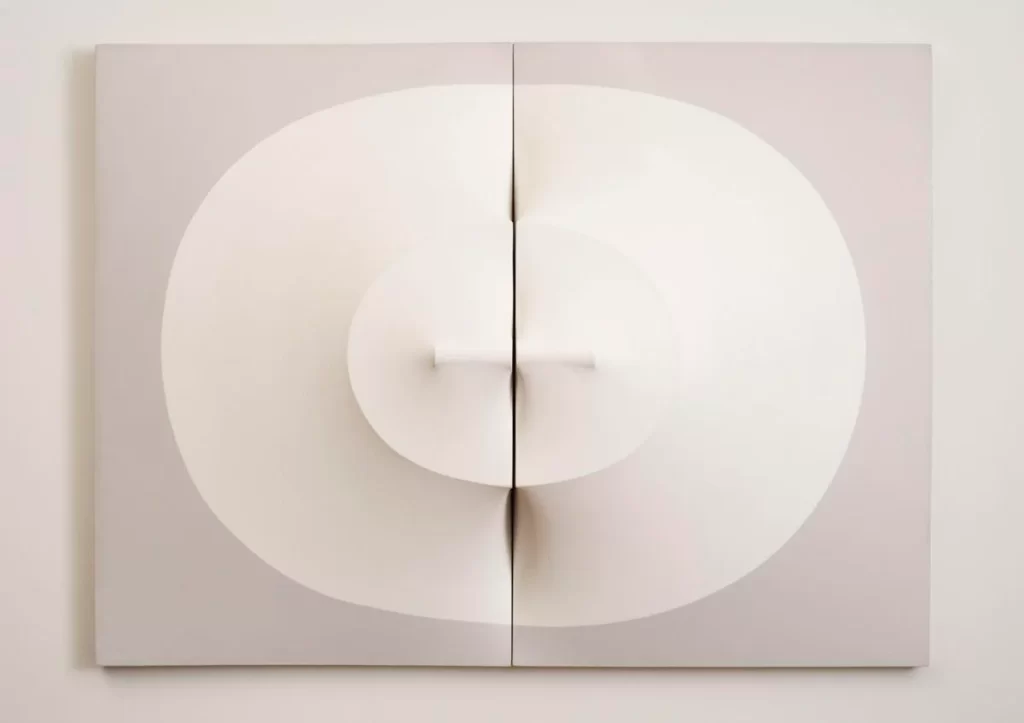Zilia Sánchez Dominguez Dies at 96
Zilia Sánchez Dominguez (b. July 12, 1928) was a Puerto Rican artist, originally born in Havana, Cuba. She began her career as a set designer and an abstract painter for theatre companies in Cuba before the Cuban Revolution (1953 – 1959). Her work has been showcased in Brooklyn, Miami, Paris, London, Venice, and more.
Sánchez Domínguez passed away in Puerto Rico on December 18, 2024, at the age of 96. The Museo de Arte de Puerto Rico and Galerie Lelong & Co.; which has represented the artist since 2013; announced her death but did not answer what caused it.
Zilia Sánchez Dominguez Early Life
Sánchez Dominguez was born to a Cuban mother and Spanish father. In 1943, she enrolled at the Escuela Nacional de Bellas Artes de San Alejandro, Havana, graduating in 1947. Her first solo exhibition was held in 1953. Once Fidel Castro ascended to power, Sánchez relocated to New York, where she studied printmaking at Pratt Institute. She identified the inception of her shaped paintings in 1955, inspired by a bedsheet hung out to dry after her father’s death, observing its movement in the wind creating distinct forms.

Zilia Sánchez Domínguez occupied an old wooden studio in the Santurce area of San Juan, Puerto Rico. However, during the 2018 Hurricane Maria, much of her work was lost to water damage. Despite that, she remained resilient, reconstructing her studio and continued working.
Moving To New York
The move to New York marked a significant transformation in Zilia Sánchez Domínguez’s artwork. Her colours became lighter and her brushwork less aggressive (as compared to the spontaneous easelwork), transitioning to smoother surfaces and subtler shades that resonated with Minimalist aesthetics. Sánchez spent a decade residing in Harlem. However, feeling discontented with the city, she returned to Puerto Rico in 1971, where she has lived since. In Puerto Rico, her artwork expanded in scale and ambition.
Zilia Sánchez Dominguez’s Art Style
Sánchez blurred the lines between sculpture and painting by developing canvases with three-dimensional shapes and protrusions. A notable quality of her artwork is the use of a minimal colour palette (often muted greys, white, pink and pastel blues) and erotic connotations. Her style evolved to focus on abstract expressionism and Art Informel.

One of the most popular Zilia Sánchez Dominguez artwork, the Amazonas series highlights female warriors, all the while emphasising the female form inlaid with “sensual contours.” Her art has often been “overlooked” and “rarely seen beyond Puerto Rico.” Some of her work explicitly referenced symbols tied to Afro-Cuban traditions. Her painting series ‘Afrocubanos’ (1956–58) explored African customs and rituals that played a key role in the evolution of Palo, the diasporic religion that emerged after the Atlantic slave trade, using sharp lines, vivid shapes, and a palette of grey and yellow.

She was a pioneering feminist artist, referencing the female form, which she abstracted to the point of being unrecognizable. By the mid-1960s, she began developing her signature stretched canvas works characterized by sensuality. At the time, minimalism was male-dominanted; adding to the cold aesthetic. However, she made it her own, by asserting a bodily presence.

She frequently evoked female figures, warriors, and heroines from Greek mythology, particularly in her ‘Troyanas’ series, where the women of Troy are summoned through white circular forms; extending outward from the canvas. The protrusions, while sensual are also reminiscent of spear-like tools of protection; deterring unwanted gazes. Another example includes ‘Antigone,’ whose narrative of resistance and defiance resonated with Sánchez’s encounters with political exile and her identity as a lesbian. Her sculptural canvases feature suggestive geometrical forms that allow for diverse interpretations, evoking humour, fluidity, and enjoyment.
Image Courtesy – The Washington Post
Contributor





